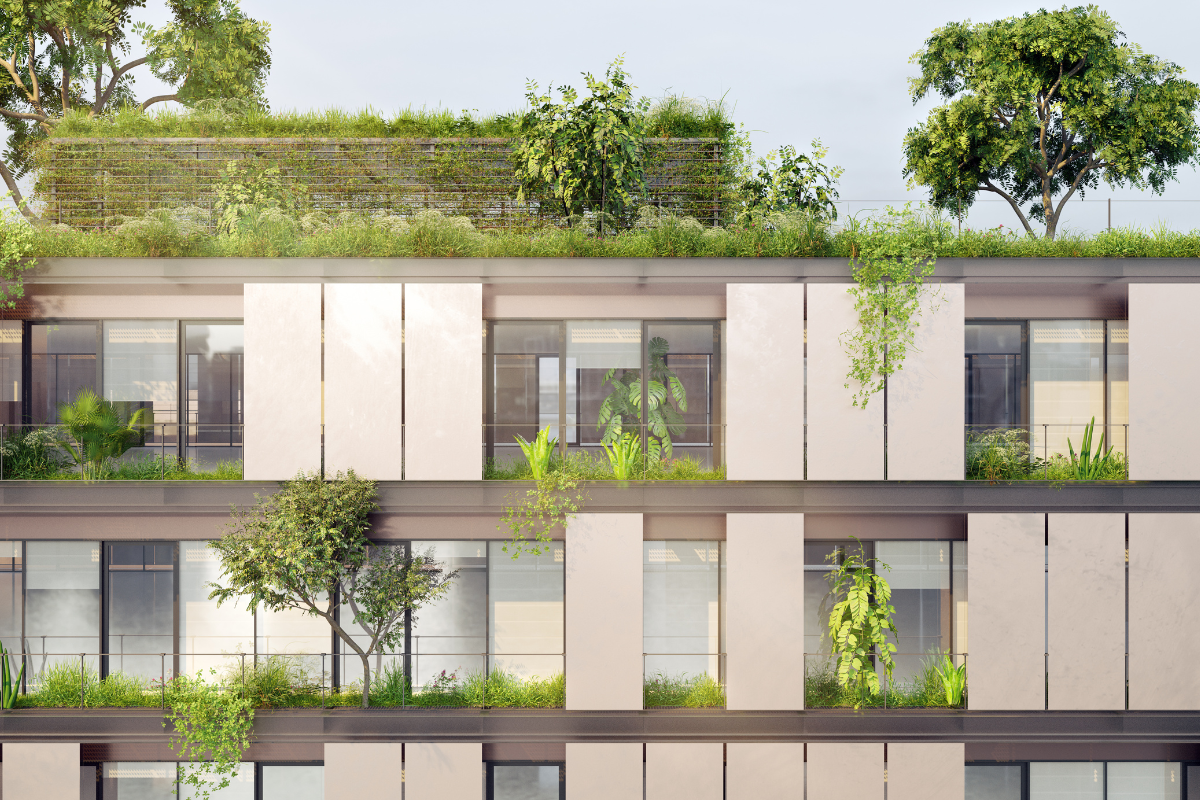|
|
Real estate investors call for swifter action to promote green building, including sustainable materials and increased energy efficiency.
A global construction boom is looming. In developing countries, there are strong population growth forecasts, housing shortages, and a projected 2x increase in floor space. More people means more products, more services, more transportation, more food, and more housing.
Faced with unprecedented real estate development, the building sector must construct energy-efficient infrastructure. That infrastructure must incorporate sustainable design, materials, and construction practices. Or the long-term consequences can be dire.
The World Economic Forum reports that over 37% of global emissions in 2020 came from buildings. And not just new construction: 69% of those emissions stemmed from operating existing buildings.
New real estate investors demand more sustainable construction methods to prevent future energy crises.
Busy? Try the speed read.
The scoop: New construction needs to prioritize sustainable practices to prevent an energy crisis in the future. Real estate investors are starting to take notice.
Facts and figures:
- The World Economic Forum reports that over 37% of global emissions in 2020 came from buildings. And not just new construction: 69% of those emissions stemmed from operating existing buildings.
- Investment in the energy efficiency of buildings continues to climb. It reached more than $180 billion in 2020, up 11% from the previous year.
- New sustainable buildings will present a $24.7 trillion investment opportunity in emerging markets by 2030.
Bottom line: Investors are and will always be driven by returns. But the private sector is starting to realize the necessary risk assessment and tax burdens associated with energy-sucking real estate. Green building is the future.
Dig deeper → 3 min
The long-term climate impact of new construction
There is a growing consensus (backed by data) that the construction sector must accelerate its shift to sustainable practices.
And ‘green’ real estate development is already underway on multiple fronts: increased regulation, improved building practices, and ESG investment. But given the sector’s enormous contribution to carbon emissions, the current trajectory of change is insufficient. And investors have a crucial role to play in this transition.
The 2015 Paris Agreement requires all participating countries to develop a climate action plan. Across 194 ‘Nationally Determined Contribution’ plans (NDCs) submitted to date, the second most frequently cited mitigation policy is improving the energy efficiency of buildings.
Topping the proposed actions are building energy efficiency codes, which have already been enforced by over 80 countries and many city/state authorities. Others include incentives and market instruments as well as resilience, renovation, and retrofitting measures.
Meanwhile, the Global Alliance for Buildings and Construction has produced ten key principles to help the building sector adapt to climate change, including ambitious energy codes, integrated design, and energy efficiency financing.
See also: An Intro Guide to Sustainable Investing
More investors prioritize green building
Investment in the energy efficiency of buildings continues to climb, reaching more than $180 billion in 2020, up 11% from the previous year. Much of this growth occurred in Europe, but given global growth forecasts, it is projected that new sustainable buildings alone will present a $24.7 trillion investment opportunity in emerging markets by 2030.
With over 1,000 cities (representing a population of 720 million people) now committed to halving emissions by 2030, there is also a critical need to finance the retrofitting of existing buildings. Corporate organizations also demand green buildings as part of their corporate reputation and risk management strategy.
Despite recent strong growth in energy efficiency financing, much more investment is needed.
What industry experts are saying
Sustainable investor Timur Tillyaev says that given the scale of the opportunity, a growing cohort of investors can help unlock the building sector’s transformative potential for achieving the energy transition and increasing the resilience of regions to climate change.
‘Sustainable building is no longer optional,’ says Tillyaev, ‘Not only is it the right thing to do, but buildings designed and built to minimize emissions along their lifecycle will generate higher asset value and greater resilience to regulatory changes and transitional risk.’
See also: A response to Blackrock’s Larry Fink and his Sustainable Investing Letter.
Tillyaev’s views are shared by industry experts.
“As more executives realize that sustainable choices are good for business, more engineering and construction companies will set sustainability commitments and adopt sustainable practices into more aspects of their business,” says Catherine Lynch, a Senior Director at SAP, a multinational software company that provides integrated engineering and construction solutions for leading companies.
The UN has set out a triple strategy to reduce buildings’ emissions along their lifecycle by reducing energy demand, decarbonizing the power supply, and addressing the footprint of construction materials. The first two measures alone, it says, could almost eliminate carbon emissions from building operations by 2050.
Stronger private partnerships to drive sustainable growth
Two factors will drive the change necessary to achieve reduced carbon emissions.
- increased regulation (principally in Europe)
- stronger partnerships between global investors and financial institutions within fast-growing economies
Investors can choose from an array of opportunities: research and development into lower-carbon building materials, new infrastructure (designed, for instance, to conserve and recycle water more efficiently), major-scale city retrofitting, and sustainable new construction projects around the world.
There is now a clear alignment between the social value case and the financial business case for investment in sustainable building. Green building will reduce carbon emissions, increase resilience to climate change and generate better returns for investors.
The stakeholders across regulation, finance, the building sector, and urban and social planning need to work together to plan, design, and create the energy-efficient, resilient buildings that humanity needs for the future.













No Comments